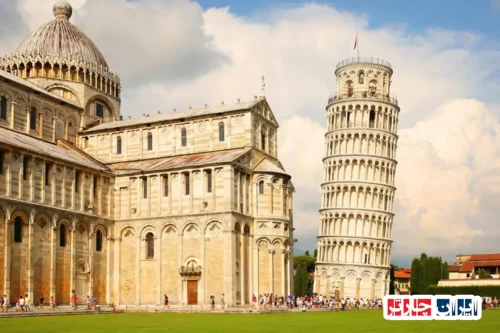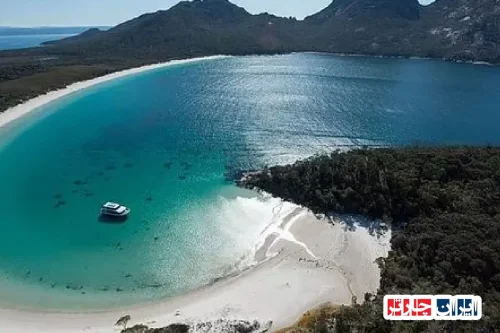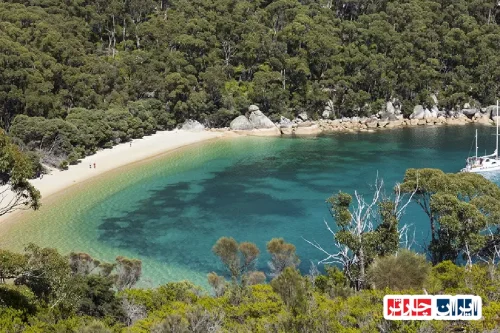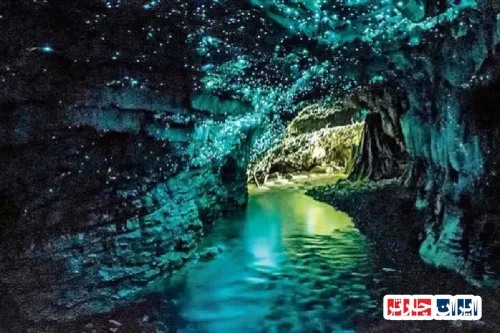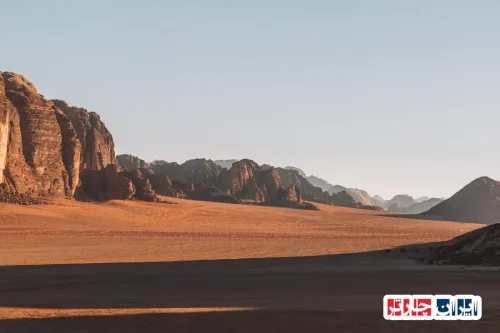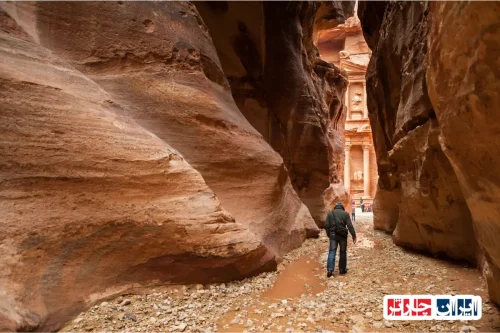Discover the Natural Wonders of Niagara Falls in Ontario and New York, United States and Canada
Niagara Falls, one of the most breathtaking natural attractions in the world, straddles the border between Ontario, Canada, and New York, United States. This magnificent waterfall has captivated millions of visitors annually with its awe-inspiring power and stunning scenery. Located at the confluence of the Niagara River, it offers a unique experience that combines natural beauty, adventure, and cultural significance. Whether you’re exploring the Canadian side with its vibrant parks and observation decks or enjoying the American perspective with its historic sites and scenic viewpoints, Niagara Falls provides an unforgettable journey into nature’s grandeur. The region is also renowned for its surrounding attractions, including lush parks, boat tours, and vibrant entertainment options, making it a top destination for travelers seeking both relaxation and excitement. Discover why millions choose to visit Niagara Falls in Ontario and New York, and plan your trip to witness this natural marvel firsthand, experiencing the majestic waterfalls that have become a symbol of natural beauty and adventure in North America.
Discover the Natural Formation and Geological History of Niagara Falls in Ontario and New York
Niagara Falls, one of the most iconic natural wonders in the world, has a fascinating geological history that spans millions of years. Its formation is the result of complex geological processes involving glacial activity, erosion, and tectonic shifts. The falls have evolved over time, shaped by the powerful forces of nature that carved out the landscape we see today. The region’s unique geology, including layers of limestone and dolomite, contributes to the durability and ongoing development of the waterfalls, making them a remarkable example of natural geological processes in North America.
During the last Ice Age, massive glaciers covered the region, and their subsequent melting caused the formation of the Great Lakes and the deep gorge that now hosts Niagara Falls. As the glaciers receded, the water from Lake Erie began flowing over the edge of the Niagara Escarpment, creating the waterfalls. The continuous erosion of the softer rock layers beneath the harder capstones has led to the gradual retreat of the falls, a process that continues today. This dynamic geological history underscores the importance of understanding the natural forces that have shaped Niagara Falls in Ontario and New York.
The natural formation of Niagara Falls is a testament to the power of Earth’s geological activity. The interaction between sedimentary rock layers, glacial deposits, and water flow has created a stunning landscape that attracts millions of visitors annually. The ongoing geological processes ensure that Niagara remains a living, evolving natural monument, offering insights into Earth’s history and the forces that continue to shape our planet.
Unveiling Hidden Secrets and Lesser-Known Facts About Niagara Falls in Canada and the United States
Beyond its breathtaking beauty, Niagara Falls holds many secrets that intrigue scientists and visitors alike. One lesser-known aspect is the existence of small islands within the river channel, which play a crucial role in dividing the water flow and reducing erosion. These islands are natural formations that have emerged over centuries due to sediment buildup and natural processes, adding to the complex geography of the falls.
Another fascinating fact is the vibrant coloration of the water, which ranges from emerald green to deep blue. This coloration results from mineral deposits, such as dissolved salts and organic materials, that are carried by the water as it flows over the rocks. The seasonal variations in water volume also influence the appearance of the falls, making each visit unique. Additionally, underground tunnels and engineered channels have been constructed to manage water flow and protect the surrounding environment, showcasing the innovative efforts to preserve this natural wonder.
These hidden features and lesser-known facts highlight the intricate natural and human-made systems that sustain Niagara Falls. Exploring these secrets offers a deeper appreciation of the complex interactions between geology, hydrology, and engineering that keep Niagara Falls in its majestic state in both Canada and the United States.
Prime Viewing Spots and Scenic Attractions Near Niagara Falls for Photography and Sightseeing
To truly appreciate the grandeur of Niagara Falls, visitors should explore the numerous vantage points and scenic spots around the area. Parks along the Niagara River, observation decks, and boat tours provide spectacular views of the falls from different angles. These locations are perfect for capturing stunning photographs, especially during sunrise and sunset when the lighting enhances the natural colors of the water and landscape.
Several islands and bridges offer unique perspectives, allowing visitors to see the falls from above or from close proximity. Elevated platforms and walking trails in the surrounding parks enable visitors to enjoy panoramic views of the waterfalls and the lush scenery. For a more immersive experience, consider visiting the observation decks at the top of the Skylon Tower or taking a boat ride on the Maid of the Mist, which gets you close to the base of the falls for an unforgettable experience.
In addition to natural vistas, the region boasts cultural and historical attractions such as museums, botanical gardens, and heritage sites. These sites enrich the sightseeing experience, providing insights into the history, culture, and natural significance of Niagara Falls in Ontario and New York. Combining scenic views with cultural exploration makes for a comprehensive and memorable visit.
Exciting Adventures and Unique Experiences Around Niagara Falls, from Boat Rides to Underwater Walks
One of the most exhilarating ways to experience Niagara Falls is by taking a boat tour that brings you close to the roaring waterfalls. The Maid of the Mist and Hornblower cruises offer an up-close view of the powerful water currents and mist, providing a thrilling adventure for visitors of all ages. These boat rides operate seasonally and are a must-do activity for anyone seeking an immersive experience.
For those seeking a more daring adventure, underwater walks and tunnel tours are available, allowing visitors to walk beneath the falls or explore the caves and tunnels carved by water over centuries. These guided excursions offer a unique perspective on the natural forces shaping Niagara and are designed with safety and excitement in mind.
Beyond water-based activities, adrenaline junkies can try zip-lining, skydiving, or helicopter tours that provide breathtaking aerial views of the falls and surrounding landscape. These adventures not only deliver adrenaline rushes but also offer spectacular photo opportunities. Whether seeking serenity or thrill, Niagara Falls provides a diverse range of experiences that create lasting memories for every visitor.
Role of Niagara Falls in Renewable Energy Production and Its Significance in Power Generation
Niagara Falls is a vital source of renewable energy, contributing significantly to regional power supplies through hydroelectricity. The hydroelectric plants harness the immense water flow to generate clean, sustainable electricity, reducing reliance on fossil fuels. These facilities have been operational for over a century, showcasing the long-standing importance of Niagara in energy production.
The hydroelectric stations utilize advanced turbines and water management systems to convert the kinetic energy of flowing water into electricity efficiently. This process not only supplies power to millions of homes and businesses but also exemplifies environmentally friendly energy generation. The continuous flow of water ensures a reliable and renewable energy source, making Niagara Falls a model for sustainable power development.
As the demand for green energy increases globally, Niagara Falls’ hydroelectric capacity remains crucial. Its role in reducing carbon emissions and promoting sustainable development underscores the importance of preserving this natural resource. Ongoing innovations aim to optimize energy output while maintaining the ecological balance of the region, ensuring Niagara continues to be a leader in renewable energy in North America.
Mythology, Legends, and Cultural Significance of Niagara Falls in Local Traditions
Niagara Falls has inspired countless legends and stories rooted in the indigenous cultures of the region. Native tribes, such as the Haudenosaunee and Anishinaabe, have long regarded the falls as sacred sites imbued with spiritual significance. Many legends tell of spirits and mythic beings inhabiting the waters, symbolizing both power and protection.
One prominent legend speaks of a maiden who sacrificed herself to save her people, her tears forming the waters of Niagara. These stories have been passed down through generations, shaping the cultural identity of the region. The falls are seen as a symbol of strength, resilience, and natural beauty, deeply woven into local folklore and traditions.
Throughout history, Niagara Falls has also been a muse for artists, writers, and musicians, influencing cultural expressions across mediums. Festivals, ceremonies, and art inspired by these legends continue to celebrate the spiritual and cultural heritage of the area. Preserving these stories enriches the understanding of Niagara’s significance beyond its physical beauty, highlighting its role as a cultural landmark in North America.
Environmental Challenges and Conservation Efforts to Protect Niagara Falls in the 21st Century
As one of the most visited natural attractions worldwide, Niagara Falls faces environmental pressures from pollution, urban development, and climate change. These challenges threaten the delicate ecological balance and the natural beauty that attracts millions annually. Efforts to conserve and protect the falls involve multiple stakeholders working together to implement sustainable practices.
Key initiatives include regulating water flow to prevent erosion, controlling pollution levels, and restoring natural habitats in the surrounding areas. Environmental agencies monitor water quality and promote eco-friendly tourism practices to minimize human impact. Public awareness campaigns and educational programs also play a vital role in fostering community involvement in conservation efforts.
Research and scientific studies continue to inform policies aimed at safeguarding Niagara’s environment for future generations. International cooperation ensures that the natural and cultural heritage of Niagara Falls remains intact, emphasizing the importance of balancing tourism, development, and ecological preservation in this iconic region.
Tourist Tips and Best Practices for Visiting Niagara Falls in Canada and the United States
Planning a trip to Niagara Falls requires some preparation to maximize the experience. Visitors should consider the best times to visit, typically during spring and early fall when the weather is mild and crowds are manageable. Booking tickets for boat tours and attractions in advance can save time and ensure availability.
When exploring the area, wear comfortable clothing and waterproof gear, especially if planning to get close to the falls. Respect local regulations and safety guidelines, particularly around restricted zones and water activities. Utilizing guided tours can provide valuable insights and enhance the overall visit.
To make the most of your trip, consider staying at nearby hotels with views of the falls, and explore both the Canadian and American sides for diverse perspectives. Combining natural sightseeing with cultural and recreational activities will create a memorable and enriching experience for all visitors to Niagara Falls in Ontario and New York.
![]()
Frequently Asked Questions
- What is the geological history of Niagara Falls?
- Niagara Falls formed over millions of years through complex geological processes involving glacial activity, erosion, and tectonic shifts. During the last Ice Age, massive glaciers covered the region, and their melting created the Great Lakes and the deep gorge that now hosts the falls. As glaciers receded, water from Lake Erie flowed over the Niagara Escarpment, carving out the waterfalls and shaping the landscape we see today. The ongoing erosion of softer rock layers beneath the harder capstones causes the falls to gradually retreat, a process that continues to this day.
- How did glaciers influence the formation of Niagara Falls?
- The glaciers from the last Ice Age covered the region, and their melting led to the formation of the Great Lakes. The retreating glaciers exposed the Niagara Escarpment, and the meltwater from Lake Erie began flowing over it, creating the waterfalls. The immense weight and movement of glaciers also contributed to tectonic shifts that helped shape the landscape, making glaciers a key factor in Niagara’s geological history.
- What types of rocks are present in Niagara Falls?
- The region features layers of sedimentary rocks, primarily limestone and dolomite. These rocks contribute to the durability of the falls and influence their ongoing development. The softer rock layers beneath the harder capstones are more susceptible to erosion, which gradually causes the falls to retreat over time.
- Are there any hidden geological features in Niagara Falls?
- Yes, within the river channel, there are small islands formed by sediment buildup that help divide the water flow and reduce erosion. Additionally, underground tunnels and engineered channels have been constructed to manage water flow and protect the environment, revealing the intricate natural and human-made systems involved in maintaining the falls.
- What role does erosion play in the future of Niagara Falls?
- Erosion is a natural process that causes the falls to gradually retreat as softer rocks are worn away by water. This ongoing erosion shapes the landscape and will continue to do so, meaning the falls will slowly change over time. Efforts are in place to monitor and manage erosion to preserve the natural beauty of Niagara.
- How does water chemistry affect the appearance of Niagara Falls?
- The water’s vibrant colors, ranging from emerald green to deep blue, are caused by mineral deposits such as dissolved salts and organic materials carried by the water. Seasonal variations in water volume also influence the appearance, making each visit unique.
- What are some scenic spots for viewing Niagara Falls?
- Popular vantage points include parks along the Niagara River, observation decks like the Skylon Tower, and boat tours such as Maid of the Mist. These spots offer spectacular views from different angles, especially during sunrise and sunset, perfect for photography and sightseeing.
- Can visitors explore underground tunnels or caves at Niagara Falls?
- Yes, guided tours are available that allow visitors to walk beneath the falls or explore caves and tunnels carved by water over centuries. These experiences provide a unique perspective on the natural forces shaping the region.
- What adventures can tourists experience around Niagara Falls?
- Beyond sightseeing, visitors can enjoy boat rides close to the falls, underwater walks, zip-lining, helicopter tours, and even skydiving. These activities offer adrenaline-pumping experiences and memorable photo opportunities.
- How does Niagara Falls contribute to renewable energy?
- Niagara Falls is a major source of hydroelectric power. Hydroelectric plants harness the water flow to generate clean electricity, supplying millions of homes and businesses. This sustainable energy source has been operational for over a century and is vital for regional power needs.
- What cultural legends are associated with Niagara Falls?
- Native tribes like the Haudenosaunee and Anishinaabe regard the falls as sacred sites. Legends speak of spirits inhabiting the waters and stories of sacrifices made by maidens to save their people, symbolizing strength and resilience. These stories are integral to the region’s cultural heritage.
- What environmental challenges does Niagara Falls face today?
- Challenges include pollution, urban development, and climate change, which threaten ecological balance. Conservation efforts focus on regulating water flow, restoring habitats, controlling pollution, and promoting eco-friendly tourism to preserve this natural wonder for future generations.
- What are best practices for tourists visiting Niagara Falls?
- Visitors should plan visits during spring or early fall, book attractions in advance, wear waterproof clothing, and follow safety guidelines. Exploring both the Canadian and American sides offers diverse perspectives, and combining natural sights with cultural sites enriches the experience.
- Why is Niagara Falls considered a symbol of natural beauty and power?
- Its majestic waterfalls, rich geological history, and ongoing natural processes exemplify Earth’s dynamic forces. The falls inspire awe and admiration, representing resilience, natural strength, and the beauty of untouched landscapes, making them a universal symbol of nature’s grandeur.



